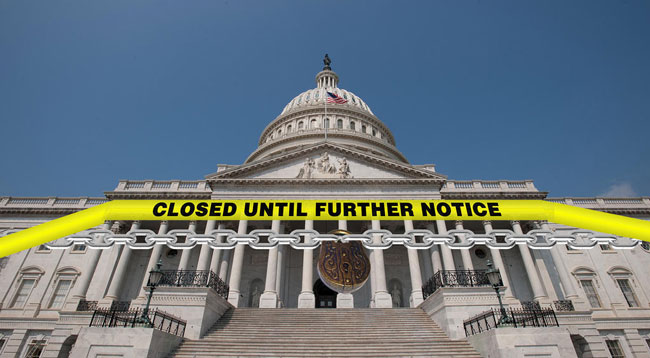Pest Control and Research is Affected by the Shutdown
By Chris Williams on October 10, 2013.

As I write this, we’re heading into day 10 of the latest government shutdown and we are learning more about who is being impacted and how. Even pest control is affected and not just because government customers are having second thoughts about the need for cockroach control in an empty cafeteria. During the shutdown, pest control is allowed at federal sites “only to the extent necessary to prevent imminent danger to life or property.”
We rely on the Centers for Disease Control (CDC) to keep track of disease outbreaks in our country, and even the world. CDC reports that 8,700 experts, or 2/3 of their staff, has been furloughed, slowing or halting efforts to protect the health and safety of Americans. Surveillance of infectious diseases has been suspended. Influenza is the current primary concern. CDC will not be monitoring flu outbreaks or tracking the incidence in different parts of the country.
Where Can We Expect Our Next West Nile Outbreak?
Those of us in the pest control industry rely on CDC to track outbreaks of pest-borne diseases like Lyme disease, West Nile virus, and even rabies. Without ongoing surveillance reporting and data collection, we lose important data that predicts where these diseases may surface next. Without that information, citizens can’t be forewarned and won’t receive precautionary information. The CDC says that even after the shutdown ends, it will take weeks to get back up to speed.
The government shutdown is also impacting research on insects that will affect the lives of many Americans, according to the Entomological Society of America. Besides entomologists at CDC, the Department of Agriculture, the National Institutes of Health, and the Environmental Protection Agency, pest researchers at many other research institutions and universities are affected as well. For a lot of entomologists the timing is terrible because the insects they study in the field have to be observed in fall to gauge their numbers for next year’s populations and to determine how and where the pests will spend the winter.
Who’s Watching the Stink Bugs?
Late season data is especially important for one of our newest pests, the brown marmorated stink bug. After decimating crops and other plants, this bug often moves into buildings in the fall. Dr. Douglas Pfeiffer, of VA Tech says, “Just when entomologists are getting set to take advantage of this once-a-year opportunity to better understand the brown marmorated stink bug, federal research funding is put in park.”
The shutdown is also affecting research and control of the emerald ash borer, a new invasive beetle that has killed tens of millions of ash trees and is moving relentlessly across the U.S. Researchers are in the process of rearing tiny parasitic wasps that they plan to release next summer to help control the borer. Unfortunately, the researchers can’t get into their labs to tend to the wasps which means they may miss the whole 2014 release period, setting control efforts back an entire year.
New insect control products currently under review by the EPA may not be approved in time for next year’s growing season due to closure of the agency. Bed bug research may be put to bed. I could go on, but let’s just hope life as we used to know it returns soon.